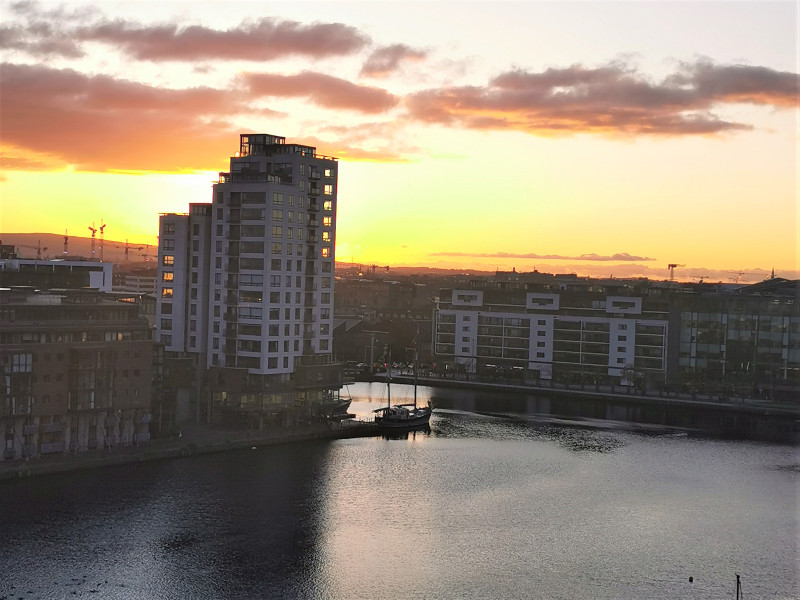Financial Wellbeing and literacy expert Frank Conway from MoneyWhizz reveals that going green can begin with some simple, low-cost steps.
In the latest Growing Up in Ireland report, most 20-somethings say above all else, they want financial stability. They also say they would like to own a home in the future. This is only to be expected. Many understand that paying rent is ‘dead money’ … and a financial noose that will only tighten, especially if rent inflation is 4pc per year.
What is interesting is where environmental concerns fit in. While important, they are not at the top of their list. This is not entirely a surprise. Most 20-somethings will have become aware of the impact money will have on their lives and in order to ‘go green’, this requires some form of funding.
What people really want
Primary day-to-day concerns of people living in Ireland are:
- Price stability
- Income predictability
- Environmental protection
As the cost of going ‘green’ becomes established, it is likely there will be varying degrees of resistance from members of the public. Some resistance is to be expected. For example, where retrofitting costs may exceed household financial capabilities, some will balk at the cost. In more cases, people may not have the financial capability to take on debt, such as cases where they may be over indebted already. All of these considerations must be taken into account as part of an overall environmental strategy, especially if greenhouse emissions targets are to be met.
Staggering cost to the public
One of the latest figures floated in respect to the cost of retrofitting all homes in Ireland is €50 Billion. It is a truly staggering sum and one that needs closer examination. However, even at a very high level, this equates to approximately €10,500 for every person living in Ireland today. If this figure is applied to just the actual number of homes, the cost rises to about €30,000 per household, this is based on approximately 1.7 million occupied dwelling in Ireland.
Where the rubber meets the road
But going ‘green’ and reducing our carbon footprint will not be resolved by retrofitting our homes alone. How we work, how we travel, how we shop, take holidays, consume, discard household waste will all become part of the ‘greening’ equation. All of this will impact on our way of life…and our wallets and it is here that every person living in the country will need to be educated, encouraged and even supported if they are to become willing participants in the lower carbon footprint journey.
Starting with small steps
Living a more environmentally sustainable lifestyle does not have to be all about the cost to the individual. In fact, if managed property, it can yield some great financial and health benefits. Here are some tips for starters:
Eliminate food waste – households generate hundreds of millions of tonnes of household waste each year. In addition to the regular cost of removal from our homes as residential waste, simply using the food we buy cuts our grocery costs too!
Use public transport – the TaxSaver bus-to-work option is far more cost effective on our wallets than driving. According to Dublin Bus and Irish Rail, employees can save between 31pc and 52pc of travel costs as a result of tax, PRSI and USC savings by using a TaxSaver ticket.
BER (not Brrrr!) your home – According to the SEAI, many homes across Ireland have low energy ratings. So, before you consider any remedial work (windows, attic etc), have an expert carry our a building energy rating (BER) first. Here, you will be give a report on how energy efficient your home is and some quick fixes to reduce energy waste.
Bike-to-Work – if you do not have public transport in your local area, it is still possible to get a tax benefit for a mode of transport; cycling. Using the Bike to Work scheme, your employer can help you obtain a brand new bike and safety equipment worth up to €1,000. You can use a salary sacrifice arrangement to save up to 51pc of the retail price of bike and equipment.
Exercise regularly – This does not have to be complicated process. A brisk 20-minute walk 3 – 4 times per week will get your heart rate up and reduce blood pressure, blood sugar levels and improve mental well-being. All you require is a good pair of walking (or running) shoes, breathable clothing and for when the weather changes, a rain-repellent outer shell.
- Frank Conway collaborates with Bank of Ireland on Financial Wellbeing and promoting financial literacy. He is a qualified financial adviser, founder of MoneyWhizz and chair of the Price Monitoring Group at the Department of Communications, Climate Action and Environment
Green money image: Romolo Tavani/Shutterstock
Want to make your business greener and more sustainable? Click here to find out more
Published: 26 November, 2019






